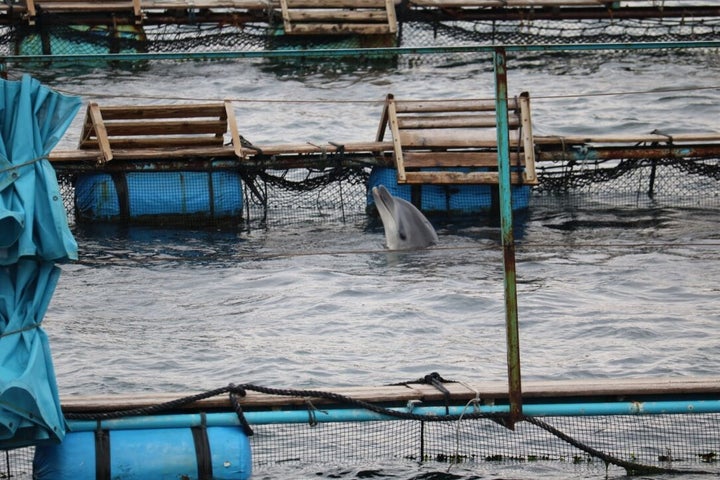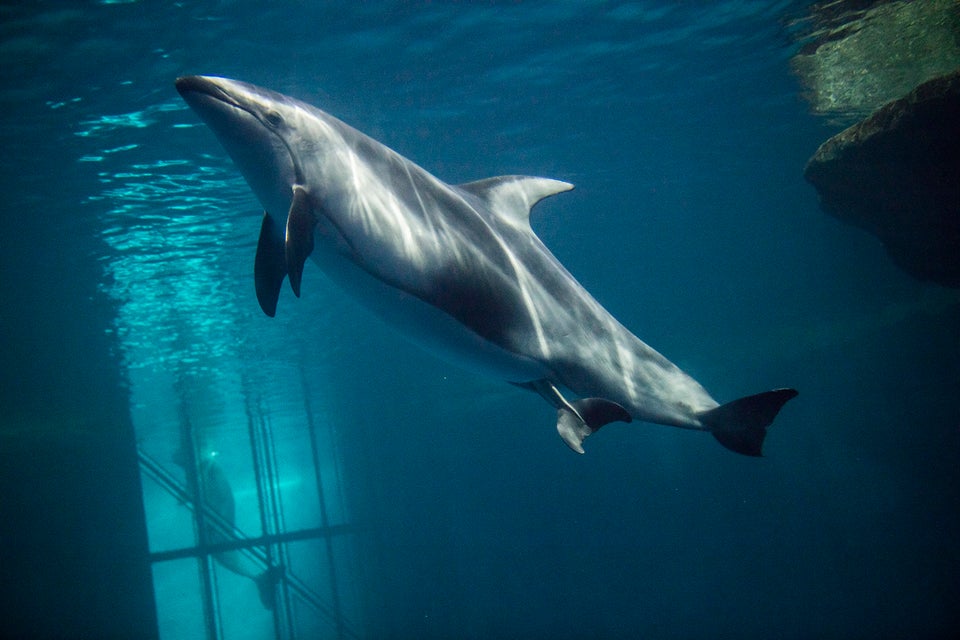
When it comes to the dolphin killing cove in Taiji, Japan, many of us do care and have taken action. We’ve signed petitions, raised awareness on social media and among friends, and sent letters to our local politicians. But there’s something missing. There has to be, given that this barbaric practice is still allowed to occur.
The difficulty in this day and age is that too few of us are able to find the time or the motivation to actually, physically go outside and be present, so that our voices might be heard in person. This is perhaps a sign of the changing times, as technology has taken over. Barely audible now are the whispers to ‘save the whale’; we have laid aside our placards and our pluckiness.
While we have learnt how invaluable the power of social media truly is, and while there are those who serve the cause working in other ways, there is still a very much needed place for peaceful marches. It’s not so easy to ignore thousands of people standing outside of an office window.
And it is your physical presence that is being called upon now; to show up as we used to when we wanted to invoke a change. This time, it’s to help save the more than 1,000 dolphins killed annually during the Taiji drive hunt season, which starts every year on September 1.
Bottlenose dolphins comprise the majority of the cetaceans (whales, dolphins and porpoises) driven into the killing cove by boats, nets and disorientating blasts of sound. Also captured and killed are Risso’s, Pacific white-sided, pantropical spotted and striped dolphins, as well as false killer and short-finned pilot whales. A pod of ten orcas, remembered as the Taiji Ten, has been decimated in Taiji’s cove too.
No cetacean is safe. This year alone, the Japanese Fisheries Agency has authorized fisherman to kill or capture 16,000 cetaceans. The force driving these bloody hunts? Money from the captive entertainment industry.
Perhaps it is no coincidence that bottlenose dolphins are the most captured cetacean, given that they are also the most kept cetacean species in captivity. A dolphin selected for captivity (usually the “pretty”, docile ones) will earn a Taiji fisherman as much as $154,000 per animal. Those butchered for human consumption, despite the toxic levels of mercury accumulated within their bodies, sell for much less.

Countries that have been implicated in Taiji cetacean importations (in the last ten years alone) include China, Korea, Ukraine, Egypt, Iran, Turkey, the United Arab Emirates, Thailand, Saudi Arabia, Taiwan and the Philippines. Although allowing Taiji-captured individuals into the US is now illegal, cetaceans that were captured in the killing cove have previously gone to SeaWorld, the Indianapolis Zoological Society, Miami Seaquarium and the US Navy. According to Ric O’Barry’s Dolphin Project, “Dolphin brokers from the United States are often spotted in Taiji.” And Canada may also be guilty, with the possibility that two dolphins displayed at the Vancouver Aquarium were captured in the Taiji drive hunts.
It has now been seven years since the release of the Oscar-winning documentary The Cove, in which dolphin welfare advocate Ric O’Barry exposed this mass slaughter. Everyone appeared to be horrified, yet we have seen very little change. The drive hunts continue to present a grave welfare concern for each cetacean captured, killed or left behind, (not to mention for the people unwittingly eating poisonous meat). These animals are sentient creatures with the capacity to understand what is going on; to comprehend and put into context everything that they experience and witness. And there is also the serious conservation concern of removing individuals from these unstudied populations.
“I have been going to the cove multiple times a year for the last 13 years trying to stop this madness,” said O’Barry, a former dolphin trainer who learned from his time working with dolphins in captivity that they do not belong there. Since leaving the industry after his revelation more than four decades ago, he has spent his days trying to free dolphins from confinement and to bring an end to the Taiji drive hunts. “I desperately need to see the dolphin slaughter end in my lifetime, and at 77 I’m running out of time.”
O’Barry is pleading for people to turn up to the peaceful march that will take place in London next week to mark the first day of this year’s hunt. It is hoped that if enough individuals are present, those in power will have no choice but to take notice. “I feel sure that if we can get 10,000 Londoners in front of the Japanese Embassy, it will end,” O’Barry stated, adding that “London is the only city where this is possible.”
And there is one very specific need that O’Barry is placing huge emphasis on: “I’m begging the UK animal protection community to please contact their millions of members directly and urge them to show up.”
The Japan Dolphins Day march will begin in Cavendish Square Gardens in London at 12pm GST next Thursday, September 1, marking the first day of the slaughters. From there, everyone who attends will proceed to the Japanese Embassy in Piccadilly. It will be a peaceful protest against an entirely violent act, and your presence is needed to demonstrate how much this issue –how much each and every cetacean– matters…
That is 10,000 people for the 16,000 whales and dolphins that will be slaughtered or sold into captivity.
Please. Can you help?


